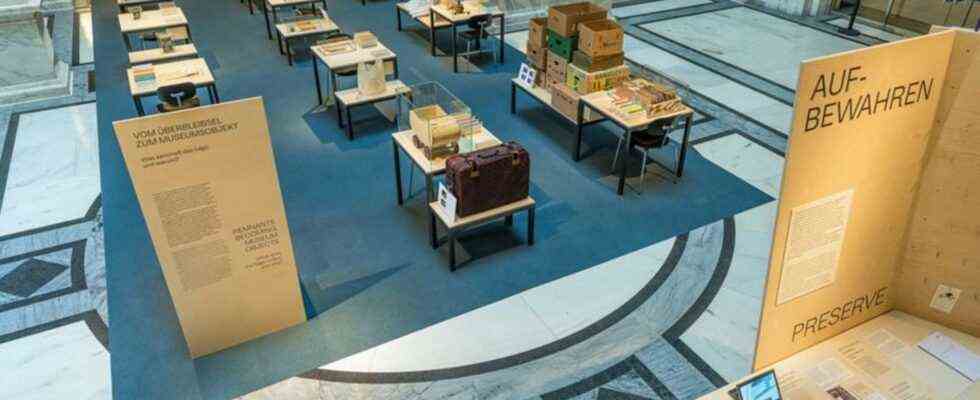story
“Dispose of Hitler” – dealing with Nazi devotional items
The House of History Austria (HdGÖ) exhibits objects from the Nazi era. Photo: Klaus Pichler / HDGÖ / APA / dpa
© dpa-infocom GmbH
The relics of the Nazi era are numerous: photos, badges or Hitler honorary citizenship letters. They lie in drawers or sometimes in safes. A Viennese museum is looking for traces.
What to do with Nazi devotional items? The House of Austrian History (HdGÖ) in Vienna is now dealing with this question in a small exhibition (until October 9, 2022) under the title “Disposing of Hitler – From the basement to the museum”.
Almost every week, the museum is offered objects from the Nazi era from private sources, says director Monika Sommer. The 14 exhibits include a jewelry bayonet from the Wehrmacht soldiers, so-called clipper albums by soldiers from the front, in which they mostly played down everyday war scenes, or a special microphone. The dictator Adolf Hitler (1889-1945) is said to have used it in his first speech after the “Anschluss” of Austria to the German Reich on March 12, 1938 in Linz. For decades this microphone had been in an office of the ORF regional studio, said Sommer.
Flourishing market
The market for memorabilia from the Nazi regime continues to flourish, says curator Stefan Benedik. An honorary citizenship letter issued for Hitler by the city of Langensalza in Thuringia was offered on the Internet for almost 10,000 euros – although there are many similar documents from other cities. However, the providers in Austria are easily liable to prosecution, as retouching swastikas in advertisements is of no use to them. “As soon as a Nazi devotional item is not only shown in a small private circle but is also offered publicly, it is against the law in Austria,” said Benedik. The question arises all the more for descendants and heirs, for example, where to put badges from the winter relief organization, some of which have been collected in boxes, says Sommer.
The badges with their flower, animal and costume motifs, which have been sold since 1933, looked so perfectly harmless that at first they would hardly be associated with a criminal regime, the HdGÖ director added. The doll’s pram, which a Wehrmacht soldier made from a field post box after the war, also seems quite harmless. However, interviews clearly show that looted goods from the French campaign were sent home in this box. Instead of turning away from this war crime, the relic turned into a children’s toy with a visible shipping address, says Benedik.
Bronze busts from the safe
The two bronze busts of Hitler, who was born in Austria and are now on view, were stored in a safe in the garbage room of the Austrian parliament. They were found during the renovation of the parliament building in 2017, said Sommer. The exhibition also highlights the never really effective ban on Nazi songs. The songs were sung carelessly, but sometimes they were intoned on purpose or as a test of courage, according to the show. The carefree or fascination shows the exhibited collection of song books of the “Bunds Deutscher Mädel” (BDM), which a music teacher used for decades for private flute lessons. All she had done was pasted over the BDM ID.
Where the line between documentation and questionable fascination lies is seldom discussed, says Sommer. “General recommendations for action are difficult, you actually have to evaluate each case individually.”

